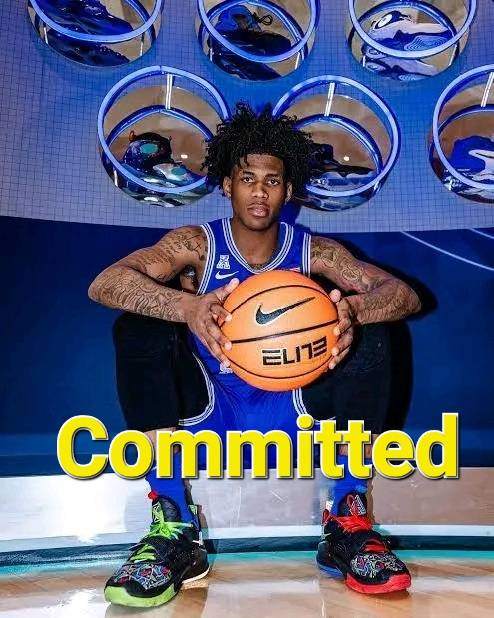In what is considered one of the biggest recruiting battles of the year, the Alabama Crimson Tide men’s basketball team has secured a commitment from the top classic player in America, edging out fierce competition from the Georgia Bulldogs and Tennessee Volunteers. This decision marks a pivotal moment in the college basketball landscape, as the elite talent brings with him a combination of skill, athleticism, and leadership potential that could reshape Alabama’s basketball program for the years to come.
The news sent shockwaves through the college basketball world, with fans and analysts alike eagerly dissecting the implications of this major commitment. In this article, we will explore the significance of this player’s decision, the impact on Alabama’s basketball program, the recruiting battle with Georgia and Tennessee, and what this means for the future of college basketball.
Who Is the Top Classic Player in America?
Before diving into the specifics of the decision, it’s important to first understand who this top classic player is. Known for his exceptional versatility, explosive athleticism, and refined basketball IQ, this player has been the subject of intense recruiting attention for the past several years. His standout performances in high school and AAU basketball have made him a household name, with scouts and analysts consistently ranking him at the top of his class.
Standing at 6’7” and possessing an incredible wingspan, he has the ability to play multiple positions, from point guard to small forward. His scoring ability is unmatched, with a deadly jump shot that stretches the floor and an ability to drive to the basket with power and finesse. Beyond his offensive prowess, he is a tenacious defender who can guard multiple positions, making him a versatile two-way player who can contribute on both ends of the floor.
His basketball pedigree is also impressive. Raised in a family with a rich sports background, this player has been immersed in the game from a young age, learning from some of the best coaches and trainers. His leadership qualities are evident both on and off the court, and his work ethic has earned him respect from teammates and coaches alike.
The Recruiting Process: A Fierce Battle Between Alabama, Georgia, and Tennessee
The decision to commit to Alabama was not made lightly. For the better part of a year, the player had been courted by multiple programs, with three schools emerging as the front-runners for his services: Alabama, Georgia, and Tennessee. Each of these schools had their own unique selling points, making the decision a difficult one for the player.
Alabama Crimson Tide: A Program on the Rise
Alabama’s basketball program has been steadily improving under head coach Nate Oats, and this commitment is a testament to the progress the Crimson Tide have made in recent years. Coach Oats has built a fast-paced, high-energy team that emphasizes three-point shooting, ball movement, and defensive pressure. His success in turning Alabama into a competitive program has made it an attractive destination for elite recruits.
The Crimson Tide are known for their strong fan base, top-tier facilities, and the ability to develop players for the next level. With a commitment from the top classic player in America, Alabama’s recruiting success is further solidified. This commitment is also seen as a signal of Alabama’s increasing relevance on the national stage, with the Crimson Tide positioning themselves as a perennial contender in the SEC and in the NCAA tournament.
The allure of playing for a coach like Nate Oats, who has proven his ability to develop players and compete at the highest levels, was a major factor in the player’s decision. Oats’ ability to balance individual player development with team success was a key selling point for Alabama, making the Crimson Tide a top contender for the recruit’s services.
Georgia Bulldogs: A Strong Push with Local Ties
The Georgia Bulldogs, led by head coach Mike White, also made a strong push for the player’s commitment. With a rich basketball tradition and a passionate fan base, Georgia was an attractive option for the recruit, especially given the proximity to home. For many recruits, staying close to family and friends is an important consideration, and Georgia offered the opportunity to play for a prominent program without straying too far from his roots.
Coach White has done a commendable job of building a competitive team in the SEC, and Georgia was hoping to take the next step with the addition of such a talented player. White’s focus on player development, particularly in terms of shooting and ball handling, would have provided the recruit with the opportunity to further refine his game.
However, despite Georgia’s strong recruiting efforts and the appeal of playing close to home, the player ultimately decided to take his talents to Alabama. It was not a decision that reflected a lack of interest in the Bulldogs, but rather the belief that Alabama provided the best overall opportunity for his growth as a player and his future aspirations.
Tennessee Volunteers: A National Powerhouse in the SEC
Tennessee, under the leadership of head coach Rick Barnes, is another program that has consistently been at the top of the SEC. The Volunteers are known for their defensive prowess, physical style of play, and ability to compete for SEC championships and NCAA tournament berths. With a talented roster and a track record of success, Tennessee was a formidable contender in the recruiting battle for the classic player.
For Tennessee, the appeal lay in their established reputation as a national powerhouse in college basketball. The program’s ability to compete at the highest levels of college basketball, coupled with Barnes’ reputation as a coach who can get the best out of his players, made Tennessee an attractive option for the recruit.
Despite Tennessee’s strong case, the player ultimately chose Alabama, citing the Crimson Tide’s up-tempo style of play and the opportunity to make an immediate impact as key factors in his decision.
What This Means for Alabama’s Basketball Program
Alabama’s basketball program has been trending upward in recent years, but securing a commitment from the top classic player in America takes it to an entirely new level. The addition of this player not only enhances Alabama’s current roster but also sends a clear message to the rest of the college basketball world that the Crimson Tide are serious about competing for national championships.
This player’s ability to contribute immediately, combined with the strong core of players already on the roster, could make Alabama a legitimate contender in the NCAA tournament for the upcoming season. With a combination of seasoned veterans and talented young players, Alabama will be one of the most dangerous teams in the country.
Furthermore, this commitment strengthens Alabama’s recruiting efforts going forward. With a top-tier player in the fold, Alabama will be able to attract other high-level recruits who want to play alongside one of the most talented players in the country. This could set the stage for sustained success, as Alabama continues to build its reputation as a program that develops players and competes at the highest level.
Looking Ahead: What Does This Mean for College Basketball?
The recruitment of this top classic player has broader implications for college basketball as a whole. With the increasing trend of top recruits choosing programs based on their potential for player development and their ability to compete for championships, Alabama’s rise could signal a shift in the balance of power within college basketball.
As programs like Alabama, Georgia, and Tennessee continue to build their brands and attract elite talent, the landscape of college basketball will become even more competitive. The SEC, already one of the most powerful conferences in college basketball, could further solidify its position as the premier conference in the sport, with programs like Alabama leading the charge.
This commitment also highlights the growing trend of elite players choosing programs that fit their style of play and development needs. The traditional powerhouse schools, while still highly competitive, may need to adapt to the changing landscape of college basketball, where high-octane offenses and versatile, two-way players are becoming increasingly valued.



